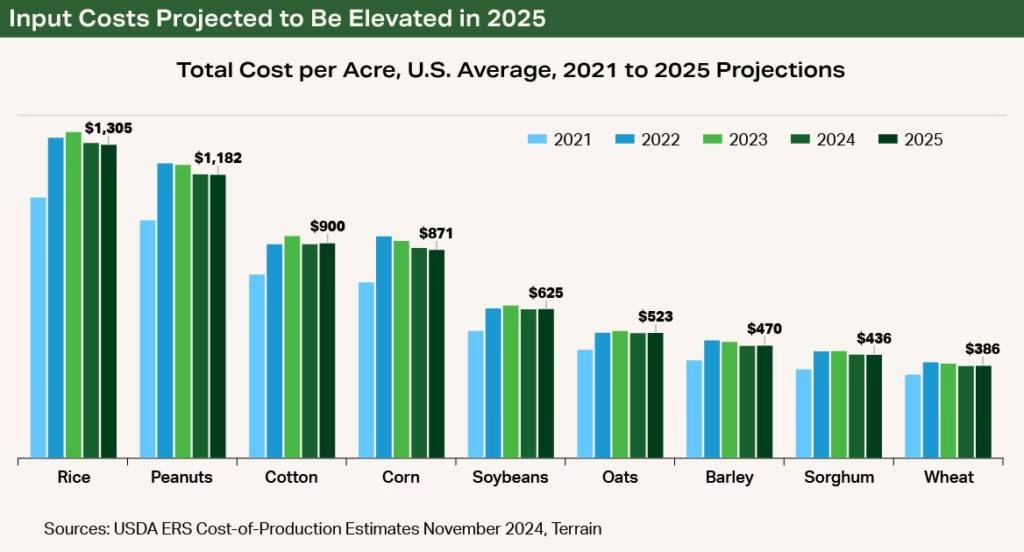
Washington farms are navigating a turbulent period in January 2025, grappling with economic challenges, climate risks, and shifting market dynamics. Below, we outline the critical factors affecting profit margins for the state’s agricultural sector, including declining farm income, rising labor costs, and the ongoing crisis in apple farming.
Declining Farm Income: A Grim Outlook
Nationally, farm income has experienced a sharp downturn. According to recent USDA data, net farm income for 2024 was estimated at $145.1 billion, marking a 31% drop from its 2022 peak and the steepest decline in recent history. This financial strain is deeply felt in Washington, where farmers are battling low commodity prices and rising input costs.
Apple Farming Crisis: Washington’s Most Valuable Crop at Risk
Washington’s apple farmers, who contribute significantly to the state’s economy, are facing a perfect storm of challenges:
Economic Pressures
- Surging Labor Costs: Labor expenses now account for approximately 60% of operational costs for apple farmers, up from 45% in 2009. These rising costs are squeezing profit margins.
- Stagnant Prices: Despite escalating production costs, apple prices have remained flat, mirroring levels from the 1990s.
Oversupply Issues
- An oversupply of apples, driven by improved farming efficiencies and expanded growing regions, has saturated the market.
- The situation is further compounded by the loss of international markets due to tariffs imposed in 2018, which have severely impacted export opportunities.
Market Consolidation
- Smaller orchards are struggling to stay afloat, leading to a wave of bankruptcies and the consolidation of farmland by larger agricultural entities backed by private equity.
Climate Change Impacts
- Altered precipitation patterns, extreme weather events, and shifting growing seasons are creating additional risks for apple production.
Rising Labor Costs Tighten Profit Margins
Labor expenses have become a critical challenge for Washington farms:
Key Statistics
- Labor costs now account for 22% of total farm expenses in Washington, compared to the national average of 9%.
- For labor-intensive crops like apples and cherries, this percentage can rise to 50% or more.
Impacts on Competitiveness
- High wages in Washington create a competitive disadvantage against countries with lower labor costs, making it harder for local farms to compete in global markets.
Labor Shortages
- Farmers face ongoing labor shortages, driving up wages further as they compete to attract and retain skilled workers.
Tight Margins Amid Rising Production Costs
Farmers are grappling with a combination of low commodity prices and rising operational expenses:
- High Input Costs: Expenses for labor, machinery, and agricultural chemicals have risen significantly, with the average Washington farm spending approximately $216,000 on production in 2024, a 23% increase year-over-year.
- Global Trade Uncertainties: A strong U.S. dollar and policy changes have limited export opportunities, further compressing profit margins.
USDA Safety-Net Programs Offer Some Relief
The USDA has introduced financial safety-net programs, including Agriculture Risk Coverage (ARC) and Price Loss Coverage (PLC), to mitigate revenue losses. Enrollment for these programs in 2025 aims to provide much-needed support for struggling farmers.
Strategies for Survival
To navigate these challenging times, Washington farmers are adopting several strategies:
- Operational Efficiency: Investing in automation and technology to reduce labor reliance.
- Risk Management: Leveraging financial analysis tools to optimize margins.
- Diversification: Exploring alternative crops and revenue streams to mitigate risks.
The Road Ahead for Washington Farms
Washington farms are at a crossroads, facing a convergence of economic pressures, climate risks, and market challenges. Without significant policy support or industry innovation, the state’s agricultural landscape may see continued consolidation and a decline in small-scale farming.
By addressing these challenges head-on and embracing new strategies, Washington’s farmers can work toward a more resilient future.
